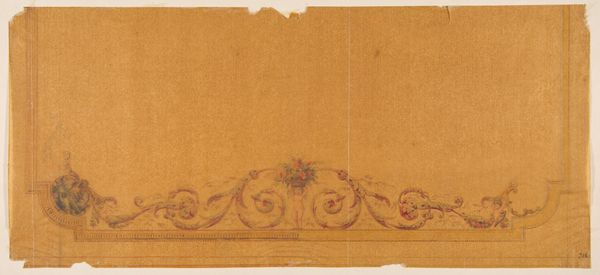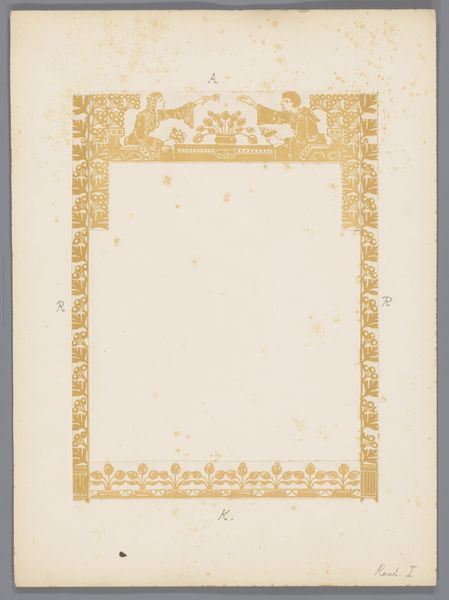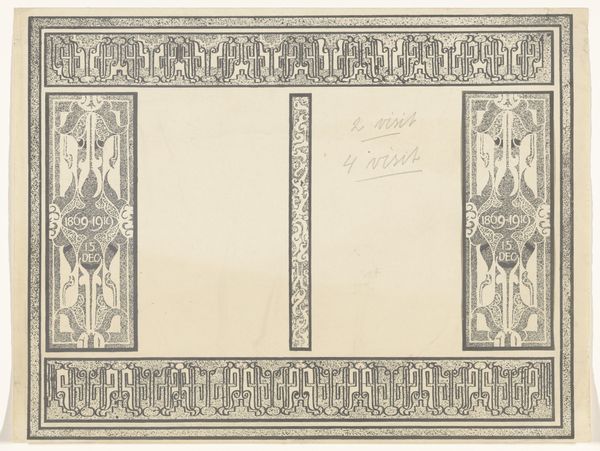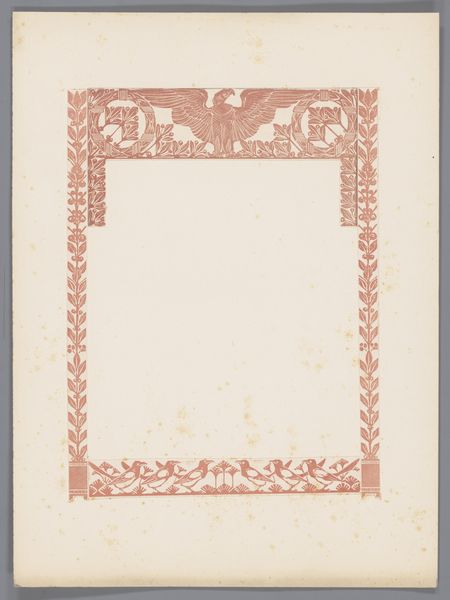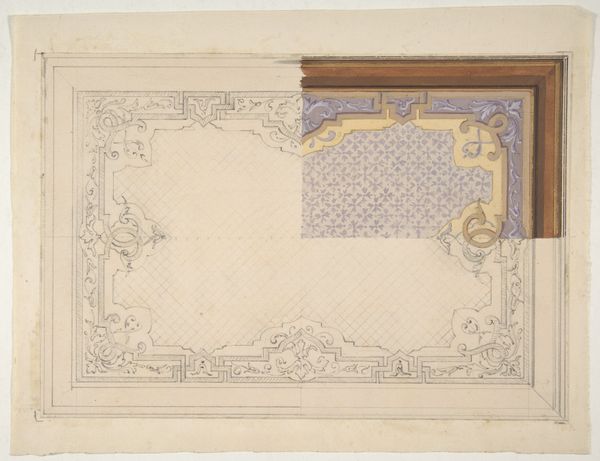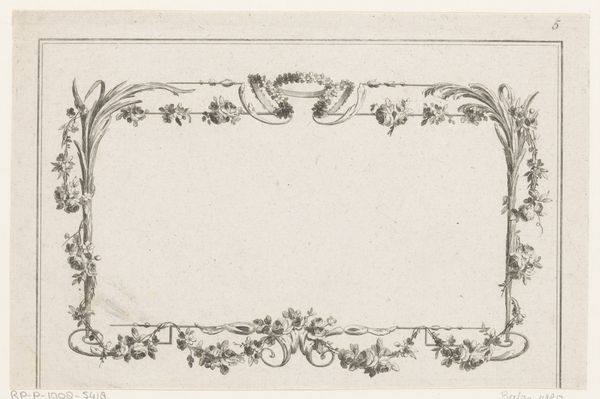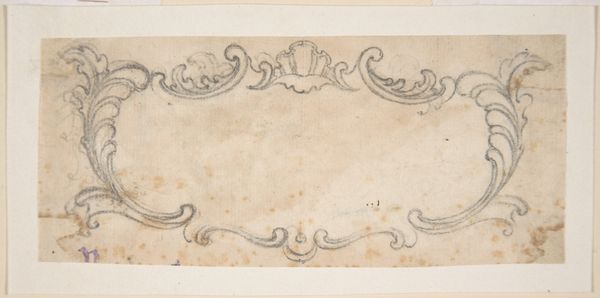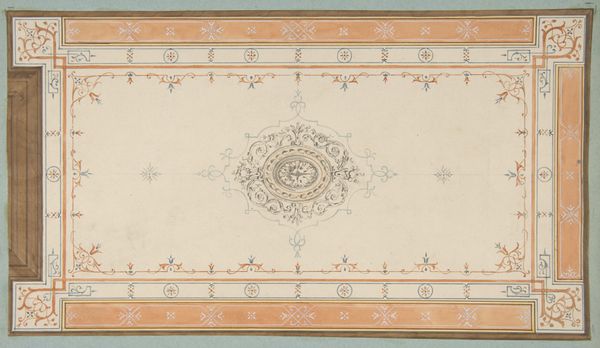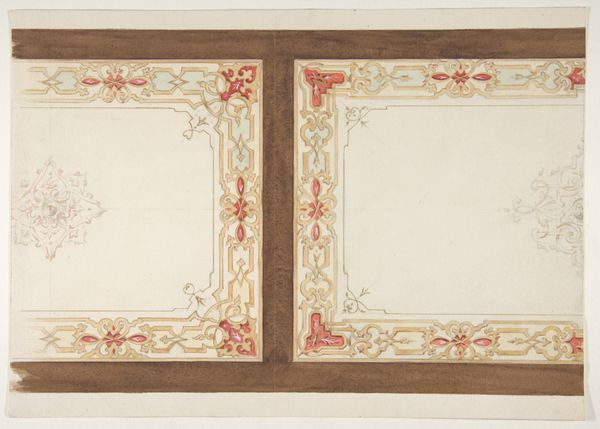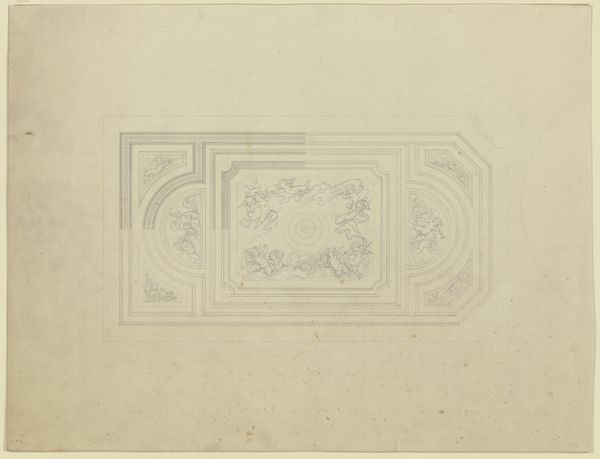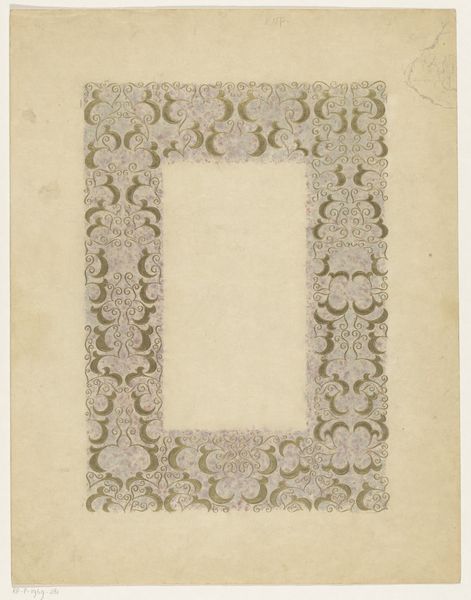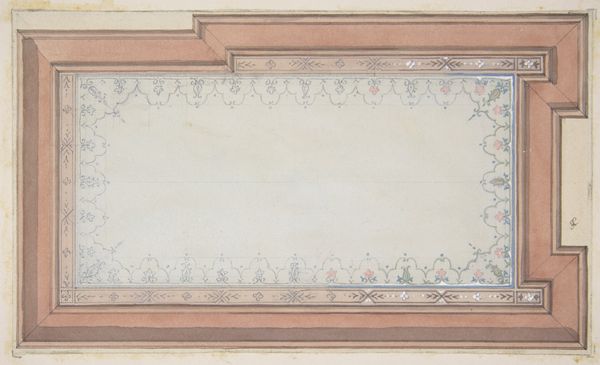
Dimensions: sheet: 20 1/2 x 10 1/8 in. (52.1 x 25.7 cm)
Copyright: Public Domain
Curator: Let's take a moment to consider this drawing from between 1825 and 1900 by John Gregory Crace, titled "Rinceau and Strapwork Ornament." Editor: My immediate reaction is one of lightness, a dance of interwoven forms despite the rigid symmetry. It's as if organic tendrils are constrained by geometric intent. Curator: Indeed. The interplay is precisely what makes this decorative design so compelling. Note the carefully orchestrated use of rinceau, that flowing foliate design, juxtaposed against the more architectural, grid-like strapwork. Crace is engaging with the enduring legacy of neoclassicism, isn’t he? Editor: Without a doubt. The symmetrical composition is a nod to that classical pursuit of order, and I am also seeing familiar icons, perhaps unconsciously retrieved: there's something ancient Roman here, filtered through generations of craft. Are we witnessing a cultural memory expressing itself? Curator: One could certainly read it that way. The rinceau motif itself carries centuries of art-historical baggage, acting almost as a visual quote, you see, employed across cultures and time periods to evoke ideas of prosperity, growth, nature’s abundance. Editor: The use of line is rather interesting; the dark curling vine motif seems to float on the surface while the structure in shades of sepia suggest foundation or frame, like architecture trying to escape itself. Is that a suggestion that this "Rinceau and Strapwork Ornament" means to support or merely adorn something else? Curator: I agree the medium itself informs meaning. As a print intended for ornamental design, we're encountering the bones of an aesthetic vision, stripped down to bare line and shape before color is fully incorporated. Editor: Ultimately it strikes me as the yearning to elevate the everyday through ornamentation. Curator: I concur; the drawing showcases Crace's masterful understanding of how to achieve harmony between form and function. Editor: And to embed in surfaces and structures the dreams, however faintly, of culture itself.
Comments
No comments
Be the first to comment and join the conversation on the ultimate creative platform.
